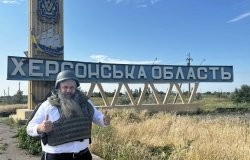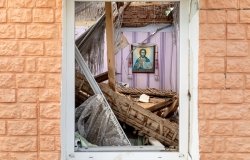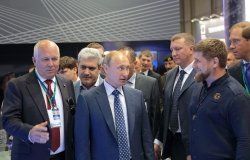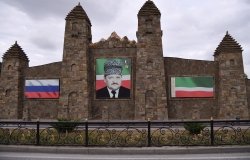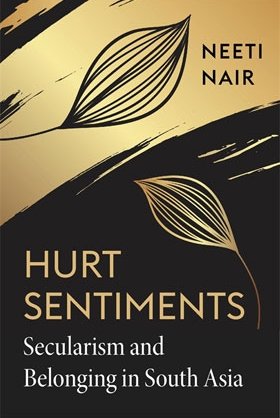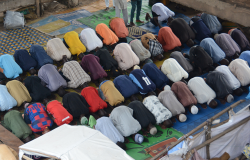Blog Buzz: New Islamic TV Expands Across Mideast
Islamic television is increasingly popular and prevalent across the Middle East one year after Islamists began winning democratic elections. Even secular satellite channels are now broadcasting more religious content—and in better prime time slots. The satellite sheikhs vary widely, however. Indeed, the battle over defining Islam in a new political era is now being waged on television screens.
By Garrett Nada
Islamic television is increasingly popular and prevalent across the Middle East one year after Islamists began winning democratic elections. Even secular satellite channels are now broadcasting more religious content—and in better prime time slots. The satellite sheikhs vary widely, however. Indeed, the battle over defining Islam in a new political era is now being waged on television screens.
In 1998, Iqraa became the first Islamic channel. It is owned by a Saudi businessman but based in Egypt. About two dozen major channels now broadcast only religious content. But many of the more than 600 Arab satellite stations are carrying Islamic programs. Islamic stations have gradually carved out a niche for a whole new media category.
Religious programs have disparate missions. Sheikh Tarek Swidan, a Kuwaiti station manager, hopes to fight terrorist ideology through Islamic reeducation. Some channels try to adapt religious practices to modernity. In Egypt, 4Shbab, or “For Youth,” seeks to generate dialogue among Muslims. It targets young viewers with Islam-themed music videos.
Others channels spread traditional Islamic values. Salafi and Wahabbi stations—many launched and supported by Saudi interests—focus on religious education rather than entertainment. Their programming emphasizes strict adherence to Islamic law and improving one’s life through Islamic learning.
An Egyptian Salafi channel, Al Nas, played an important role in spreading awareness of the inflammatory film, “The Innocence of Muslims.” The amateur YouTube clip was relatively unknown before television host Sheikh Khalid Abdullah aired a version dubbed in Arabic on Sept. 9. News about the film’s offensive content then spread via Facebook and Twitter. Anti-U.S. demonstrations, including attacks on several embassies, broke out across the region starting on Sept. 11.
Many stations are expanding religious programming to cater to the increasingly conservative Arab public. Facebook and Twitter have helped stations interact with viewers and generate larger audiences. Stations have even started earning revenue by selling theme songs as ringtones and other content for mobile phones. Most channels have a scrolling bar on screen that displays viewers' live text-messages to the television host. Fans of influential sheikhs can also log onto station websites and pose personal questions.
In 2012, funding grew for religious stations, and their programs became more polished. Yet they faced tougher competition. Popular mainstream stations, like the multiple channels owned by the Middle East Broadcasting Center (MBC), offer sophisticated shows with elaborate sets, attractive casts and high budgets. Some of the most popular shows are local adaptations of Western favorites, such as “Arab Idol” and “Arabs Got Talent.” American movies like “Harry Potter” and dramas like “Grey’s Anatomy” are broadcast with subtitles or dubbed in Arabic.
But even stations like MBC have increasingly catered to a wider demographic of viewers interested in Islam. During Ramadan 2012, it broadcast the most expensive drama ever produced in the Arab world. The $50 million series, “Omar,” was based on the life of the second caliph, or leader, after Islam was founded. Some conservative Muslims objected to the portrayal of the companions of the Prophet Mohamed, while others hoped the series would promote Islam.
Mainstream stations feature popular and younger televangelist preachers such as Ahmed Al Shugairi and Moez Masoud all year long. These charismatic satellite sheikhs are attracting viewers of all ages. The following seven satellite channels illustrate the diversity of religious programming.
 Marya TV: Traditional Islamist and Salafi content
Marya TV: Traditional Islamist and Salafi content
Marya TV is the first Egyptian satellite channel to only broadcast women wearing the niqab, the black face veil. It was launched on the first day of Ramadan in July 2012. Marya TV, named after one of the Prophet Mohamed’s wives, broadcasts for six hours a day on Ummah TV, an Islamic station launched in 2006. Salafi Sheikh Ahmed Abdallah, known as Abu Islam, created both stations.
Women who wear the niqab have occasionally hosted shows on conservative stations like Awtan TV since at least 2008. But Marya TV also involves women in all aspects of the station’s operations, from writing to working the cameras. Abeer Shahin, the primary anchor, told AFP, “The main goal of the channel is to show society that there are women in niqab who are active, who can have a role in society and be successful and be doctors, engineers or successful media personalities.”
Marya TV bills itself as a women’s interest channel rather than a religious station. “We have children’s programs, sewing programs, shows on relationships, comedy, politics,” Shahin told AFP. And on her show “First Year of Marriage,” she advised viewers, “Even if you have the whole house lit with candles, do not be upset when your husband comes home from a long day of work and does not notice.”
Other shows range from Islamic theology to everyday practices. Marya TV’s YouTube channel features a montage of photographs of women wearing niqab set to the song “This is My Hijab” by the popular Islamic singer Ahmed Bukhatir.
Some programs do not explicitly focus on Islam, but Salafi ideology is a constant subtheme. And presenters maintain an instructional tone. Sheikh Abu Islam told the Associated Press, “I want to give children the ability to see these women and say ‘I want to be like that’…to create a generation that wants this.”
BBC Arabic aired a report and debate about the station, which Marya TV rebroadcast but obscured all of the women not wearing hijab or niqab behind semi-opaque black screens to obscure their faces and bodies.
Click here to view Marya TV’s official YouTube channel and the BBC report.
Click here for Marya TV’s official Facebook page.
 Iqraa: Traditional Islamist content
Iqraa: Traditional Islamist content
Iqraa was launched by Saudi Arabian billionaire Sheikh Salah Kamal in 1998. It was the first channel to broadcast exclusively Islamic content and had a virtual monopoly over religious programming until the launch of a second station, Al Resalah, in 2003. Iqraa is Arabic for “recite,” referring to the Koran, but it is not a Salafi channel. It claims to advocate a “centrist Islam” and a message of “tolerance.” Female hosts wear hijab headscarf and stylish clothing rather than the black niqab seen on Salafi stations.
Some of Iqraa’s most popular shows are hosted by preachers and focus on various aspects of Islamic theology, ethics or self-improvement. Viewers can pose questions to hosts using Facebook or Twitter. Other shows focus on health, cooking, travel and history.
Click here to watch Iqraa live through its official website (Arabic and English).
Click here for Iqraa’s official YouTube channel.
Click here for Iqraa’s official Facebook page.
 Al Resalah: Neo-Islamist content
Al Resalah: Neo-Islamist content
Al Resalah, “The Message,” was launched in 2006 by Saudi Prince Walid Bin Talal, owner of the successful Rotana media empire of television and radio. The prince intended the channel to represent a moderate and modern version of Islam.
During the first year of broadcasting, General Manager Sheikh Tarek Swidan told The Christian Science Monitor that he is “directing the channel to be in clash… with terrorist ideas.” Swidan is a popular Kuwaiti motivational speaker who spent 17 years in the United States.
Al Resalah emphasizes entertainment more than education, which distinguishes it from most Islamic stations. Al Resalah’s reality shows, comedies, talk shows, music videos, cartoons, and game shows feature content acceptable to observant Muslim audiences. Some of the region’s most influential sheikhs and preachers host shows as well.
“Many people have a shortsighted idea that to be Islamic somebody has to sit and talk about Islam and dress and talk in a certain way and have a certain décor behind them. To me, this is not how I understand it,” General Manager Tarek Swidan said in a 2006 interview with Transnational Broadcasting Studies.
Al Resalah’s anchors include females who wear conservative, modern and colorful clothing, including hijab but not niqab. But women who are not veiled also appear on air, and the crews are coed. Music is prominently showcased, a red line for more conservative Salafis. At a 2009 press conference, Swidan explained that he hoped to gain Saudi viewers by targeting “people who do not mind music… rather than focusing on the two million who do not approve of the music.”
Click here to watch Al Resalah live through its official website.
Click here for Al Resalah’s official YouTube channel.
Click here for Al Resalah’s official Facebook page.
 4Shbab: Neo-Islamist content
4Shbab: Neo-Islamist content
4Shbab, “For Youth”, was launched in 2009 under media entrepreneur Ahmad Abu Haiba. The former managing director envisioned the Islamic art channel as Islam’s answer to MTV. The station’s motto is “the new tune of Islam.” At the launch ceremony in Cairo, Abu Haiba said 4Shbab is “promoting dialogue and seeking to remove negative stereotypes of Islam and the Arabs.”
4Shbab is trying to attract Arab youth, which it defines as individuals from age 15 to 40, away from mainstream Arab channels that frequently present dancing women in revealing clothing. It gained initial popularity through “Your Voice is Heard,” a singing competition for aspiring male religious singers. 4Shabab’s program lineup also includes cooking, travel, self-improvement and spiritual shows.
4Shbab is best known for its Islam-themed music videos. It showcases male artists from across the Islamic world. It also has non-Arab stars, including Zain Bkhikha from South Africa, Sami Yusuf from Britain, and the U.S. hip-hop group Native Deen.
4Shbab initially intended on gradually introducing women wearing hijab into its programming. But the station remains male-only due to pressure from Egyptian conservatives and Saudi financiers. Ali al Omarey, the Saudi chairman of 4Shbab, is a prominent religious scholar and host of a popular program.
Click here to view 4Shbab live through its official website (English and Arabic).
Click here for 4Shbab’s official YouTube channel.
Click here for 4Shbab’s official Facebook page.
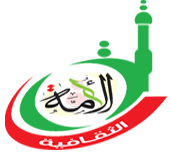 UmmahTV: Classical Islamist and Salafi content
UmmahTV: Classical Islamist and Salafi content
Egyptian Sheikh Ahmed Abdallah launched Ummah TV in 2006 with the help of donations. “Ummah” is the worldwide Muslim community. The station was forced to close in 2008 due to financial problems and multiple raids by state security forces, the Associated Press reported. Abdallah was also detained more than four times by President Hosni Mubarak’s regime.
After Mubarak’s ouster, Abdallah relaunched the station in 2011 as Islamists gained political popularity. Military police raided the station again and confiscated cameras in early 2012, but the low-budget channel still operates out of an old apartment near Cairo’s Abbasiya Square.
Ummah TV’s programming is primarily focused on religious topics. Most of the hosts are Salafi sheikhs, and most women wear niqab on air.
The station usually does not cover politics, but devoted significant time to the 2012 presidential elections. It officially supported Salafi candidate Hazem Salah Abu Ismail and broadcast his lengthy speeches unedited. Ummah TV anchors also criticized rival presidential candidate Ahmed Shafiq, a former senior air force commander and Mubarak’s last prime minister. The station added gunfire sounds to broadcasts of his speeches.
Click here to watch Ummah TV live.
Click here for Ummah TV’s official website.
Click here for Ummah TV’s official YouTube channel.
Click here for Ummah TV’s official Facebook page.
 Al Nas: Classical Islamist and Salafi content
Al Nas: Classical Islamist and Salafi content
Launched in 2006, Al Nas means “The People.” It is also the Koran’s 114th chapter. Owned by Saudi Arabian businessman Mansour Ben Kedsa, it is now one of the most popular Islamic channels in Arabic. Its slogan is “the station that takes you to heaven.” Initially the station broadcasted music, dancing and other mainstream entertainment but it attracted few viewers. Ben Kedsa then decided add more religious content. He invited Salafi sheikhs to host shows and the station become more conservative.
One of the station’s objectives is to “promote the spread of cultural awareness and knowledge among the children of our ummah (Islamic nation) and keep up with modern technology.” The station has turned a profit through commercials and by selling Islamic ringtones and other downloads to viewers via text message.
The station’s goal is to build a strong Muslim family and instill Islamic ideals in society by targeting “the mind, heart and body,” according to its website. Its most popular shows are hosted by Salafi preachers. But the channel also attracts a wider audience through shows focused on cooking, technology, politics, news and other topics.
Click here to watch Al Nas live through YouTube.
Click here for Al Nas’ official website.
Click here for the official Facebook page.
 Al Rahma: Classical Islamist and Salafi content
Al Rahma: Classical Islamist and Salafi content
Egyptian Sheikh Mohamed Hasan Al Rahma launched Al Rahma, or “The Mercy,” in 2007. He had previously appeared on rival Salafi channel Al Nas. Al Rahma is owned by clerics rather than businessmen. As a result, the station is less commercialized than other religious channels.
Al Rahma’s 60-plus hosts are all male scholars or preachers. Many hold doctoral degrees in Islamic sciences. Al Rahma viewers frequently pose questions to talk-show hosts via the Internet or text messages. The lineup varies little, and the station does not broadcast all 24 hours.
The fatwas of Al Rahma’s most popular sheikhs are widely respected. In early 2012, Sheikh Mohamed Hasan and Sheikh Mohamed Abdel Maqsoud issued a joint fatwa that families of victims killed by security forces during Egypt’s uprising could accept blood-money compensation in exchange for forgiving the killers. They even specified that 500,000 Egyptian pounds or $82,000 was an acceptable payment.
Click here for Al Rahma’s official website.
Click here to watch Al Rahma live through its official YouTube channel.
Click here for Al Rahmah’s official Facebook page.
Garrett Nada is a Program Assistant at the U.S. Institute of Peace in the Center for Conflict Management.
Related Program

The Islamists
Learn more about Hamas and how it relates to similarly aligned organizations throughout the region. Read more
